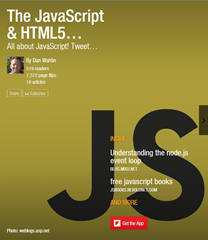Creating Custom AngularJS Directives Part 7 – Creating a Unique Value Directive using $asyncValidators
New to AngularJS? Check out the AngularJS in 60-ish Minutes video to get a jumpstart on using the framework to build Single Page Applications (SPAs). Also check out my AngularJS JumpStart and AngularJS Custom Directives video training courses.

|

|

|
Creating Custom AngularJS Directives Series
- The Fundamentals
- Isolate Scope
- Isolate Scope and Function Parameters
- Transclusion and Restriction
- The link() Function (coming soon)
- Using Controllers
- Creating a Unique Value Directive using $asyncValidators
In a previous post I demonstrated how to build a unique value directive to ensure that an email address isn’t already in use before allowing a user to save a form. With changes in AngularJS 1.3+, several new features are available to clean up the previous version of the directive and make it easier to work with. In this post I’ll update the previous post, walk-through some of the new features in a directive called wcUnique, and show how a few of the new features can be applied. The code shown is part of the Customer Manager Standard sample application that’s available on Github.
An example of the directive in action is shown next. In this example the email address shown is already in use by another user which causes the error message to be displayed.
The directive is applied to the email input control using the following code:
<input type="email" name="email" class="form-control" data-ng-model="customer.email" data-ng-model-options="{ updateOn: 'blur' }" data-wc-unique data-wc-unique-key="{{customer.id}}" data-wc-unique-property="email" data-ng-minlength="3" required />
You can see that a custom directive named wc-unique is applied as well as 2 properties named wc-unique-key and wc-unique-property (I prefer to add the data- prefix but it’s not required). Before jumping into the directive let’s take a look at an AngularJS factory that can be used to check if a value is unique or not.
Creating the Factory
Unique value checks typically rely on a call to a back-end data store of some type. AngularJS provides services such as $http and $resource that are perfect for that scenario. For this demonstration I’ll use a custom factory named dataService that relies on $http to make Ajax calls back to a server. It has a function in it named checkUniqueValue() that handles the unique checks. Note that I don’t typically distinguish between the term “factory” and “service” as far as the name goes since they ultimately do the same thing and “service” just sounds better to me (personal preference).
(function () { var injectParams = ['$http', '$q']; var customersFactory = function ($http, $q) { var serviceBase = '/api/dataservice/', factory = {}; factory.checkUniqueValue = function (id, property, value) { if (!id) id = 0; return $http.get(serviceBase + 'checkUnique/' + id + '?property=' + property +
'&value=' + escape(value)).then( function (results) { return results.data.status; }); }; //More code follows return factory; }; customersFactory.$inject = injectParams; angular.module('customersApp').factory('customersService', customersFactory); }());
Creating the Unique Value Directive
To handle checking unique values I created a custom directive named wcUnique (the wc stands for Wahlin Consulting – my company). It’s a fairly simple directive that is restricted to being used as an attribute. The shell for the directive looks like the following:
function () { var injectParams = ['$q', 'dataService']; var wcUniqueDirective = function ($q, dataService) { return { restrict: 'A', require: 'ngModel', link: function (scope, element, attrs, ngModel) { //Validation code goes here } }; }; wcUniqueDirective.$inject = injectParams; angular.module('customersApp').directive('wcUnique', wcUniqueDirective); }());
As the directive is loaded the link() function is called which gives access to the current scope, the element the directive is being applied to, attributes on the element, and the ngModelController object. If you’ve built custom directives before (hopefully you’ve been reading my series on directives!) you’ve probably seen scope, element and attrs before but the 4th parameter passed to the link() function may be new to you. If you need access to the ngModel directive that is applied to the element where the custom directive is attached to you can “require” ngModel (as shown in the code above). ngModel will then be injected into the link() function as the 4th parameter and it can be used in a variety of ways including validation scenarios. One of the new properties available in ngModelController with AngularJS 1.3+ is $asyncValidators (read more about it here) which we’ll be using in this unique value directive.
Here’s the complete code for the wcUnique directive:
(function () { var injectParams = ['$q', '$parse', 'dataService']; var wcUniqueDirective = function ($q, $parse, dataService) { return { restrict: 'A', require: 'ngModel', link: function (scope, element, attrs, ngModel) { ngModel.$asyncValidators.unique = function (modelValue, viewValue) { var deferred = $q.defer(), currentValue = modelValue || viewValue, key = attrs.wcUniqueKey, property = attrs.wcUniqueProperty; //First time the asyncValidators function is loaded the //key won't be set so ensure that we have //key and propertyName before checking with the server if (key && property) { dataService.checkUniqueValue(key, property, currentValue) .then(function (unique) { if (unique) { deferred.resolve(); //It's unique } else { deferred.reject(); //Add unique to $errors } }); } else { deferred.resolve(); //Ensure promise is resolved if we hit this } return deferred.promise; }; } }; }; wcUniqueDirective.$inject = injectParams; angular.module('customersApp').directive('wcUnique', wcUniqueDirective); }());
You’ll notice that the ngModel parameter that is injected into the link() function is used to access a property named $asyncValidators. This property allows async operations to be performed during the data validation process which is perfect when you need to go back to the server to check if a value is unique. In this case I created a new validator property named unique that is assigned to a function. The function creates a deferred object and returns the promise. From there the code grabs the current value of the input that we’re trying to ensure is unique and also grabs the key and property attribute values shown earlier.
The key represents the unique key for the object (ultimately the unique identifier for the record). This is used so that we exclude the current object when checking for a unique value across objects on the server. The property represents the name of the object property that should be checked for uniqueness by the back-end system.
Once the variables are filled with data, the key and property values are passed along with the element’s value (the value of the textbox for example) to a function named checkUniqueValue() that’s provided by the dataService factory shown earlier. This triggers an Ajax call back to the server which returns a true or false value. If the server returns that the value is unique we’ll resolve the promise that was returned. If the value isn’t unique we’ll reject the promise. A rejection causes the unique property to be added to the $error property of the ngModel so that we can use it in the view to show and hide and error message.
Showing Error Messages
The unique property added to the $error object can be used to show and hide error messages. In the previous section it was mentioned that the $error object is updated but how do you access the $error object? When using AngularJS forms, a name attribute is first added to the <form> element as shown next:
<form name="editForm">
The editForm value causes AngularJS to create a child controller named editForm that is associated with the current scope. In other words, editForm is added as a property of the current scope (the scope originally created by your controller). The textbox shown earlier has a name attribute value of email which gets converted to a property that is added to the editForm controller. It’s this email property that gets the $error object. Let’s look at an example of how we can check the unique value to see if the email address is unique or not:
<div class="col-md-2"> Email: </div> <div class="col-md-10"> <!-- type="email" causing a problem with Breeze so using regex --> <input type="email" name="email" class="form-control" data-ng-model="customer.email" data-ng-model-options="{ updateOn: 'blur' }" data-wc-unique data-wc-unique-key="{{customer.id}}" data-wc-unique-property="email" data-ng-minlength="3" required /> <!-- Show error if touched and unique is in error --> <span class="errorMessage" ng-show="editForm.email.$touched && editForm.email.$error.unique"> Email already in use </span> </div>
Notice that the ngShow directive (on the span at the bottom of the code) checks the editForm property of the current scope and then drills down into the email property. It checks if the value is touched using the $touched property (this property is in AngularJS 1.3+ and reports if the target control lost focus – it has nothing to do with a touch screen) and if the $error.unique value is there or not. If editform.email.$error.unique exists then we have a problem and the user entered an email that is already in use. It’s a little bit confusing at first glance since we’re checking if unique is added to the $error object which means the email is already in use (the unique property is in error). If it’s not on the $error object then then everything is OK and the user entered a unique value.
The end result is the red error message shown next:
Conclusion
Directives provide a great way to encapsulate functionality that can be used in views. In this post you’ve seen a simple AngularJS unique directive that can be applied to textboxes to check if a specific value is unique or not and display a message to the user. To see the directive in an actual application check out the Customer Manager sample application at https://github.com/DanWahlin/CustomerManagerStandard.
Subscribe to my Free FlipBoard Magazines: | ||||
 |  |  |  |  |




